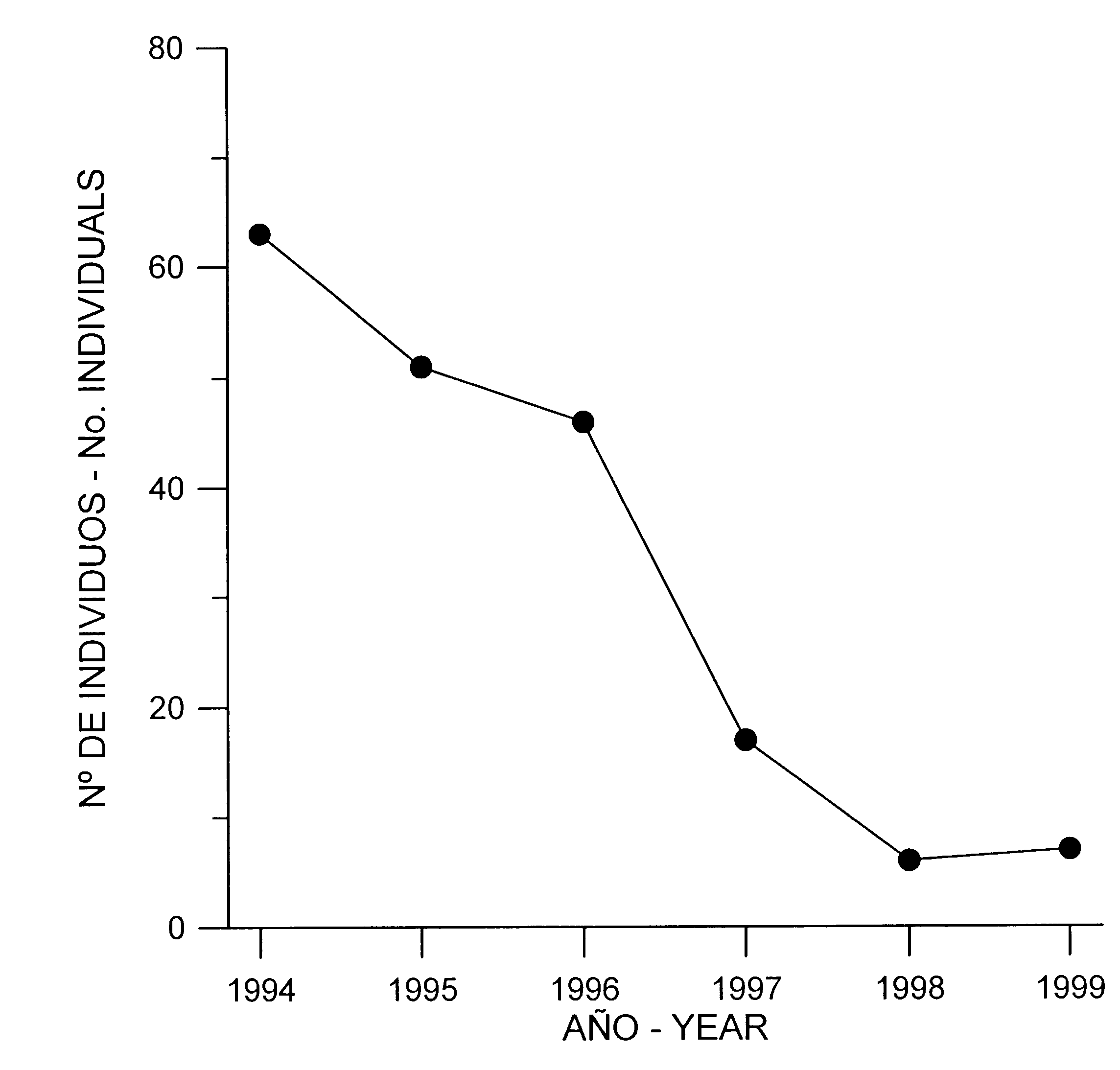
Fig.4.4.1. La figura muestra el índice de abundancia (número de individuos observados a lo largo del verano en transectos al ocaso) de Lucanus cervus en El Escañorio (Corvera de Asturias, Asturias) entre 1994 y 1999. Los muestreos se realizaron semanalmente desde mediados de junio hasta finales de agosto. El marcado descenso en el número de individuos a partir de 1997 coincide con el incendio de la zona de estudio.
Este estudio piloto indica que es posible utilizar un sistema de muestreo sencillo y detectar cambios en el tamaño de las poblaciones de L. cervus. No obstante, sería deseable una calibración del método de transectos al ocaso con otros métodos más tradicionales como el de marcaje, captura y recaptura.
The figure shows the abundance index (number of individuals counted along the summer in transects carried out at dusk) for L. cervus at El Escañorio (Asturias, northern Spain) between 1994 and 1999. Transects were carried out weekly from mid June to late August. The strong decrease in abundance after 1997 coincides with a fire in the study area.
This pilot study indicates that it is possible to utilise a simple sampling method and to detect changes in population size of L. cervus. However, a callibration of this transect method with other traditional sampling methods -such as the capture and recapture method- would be desirable.